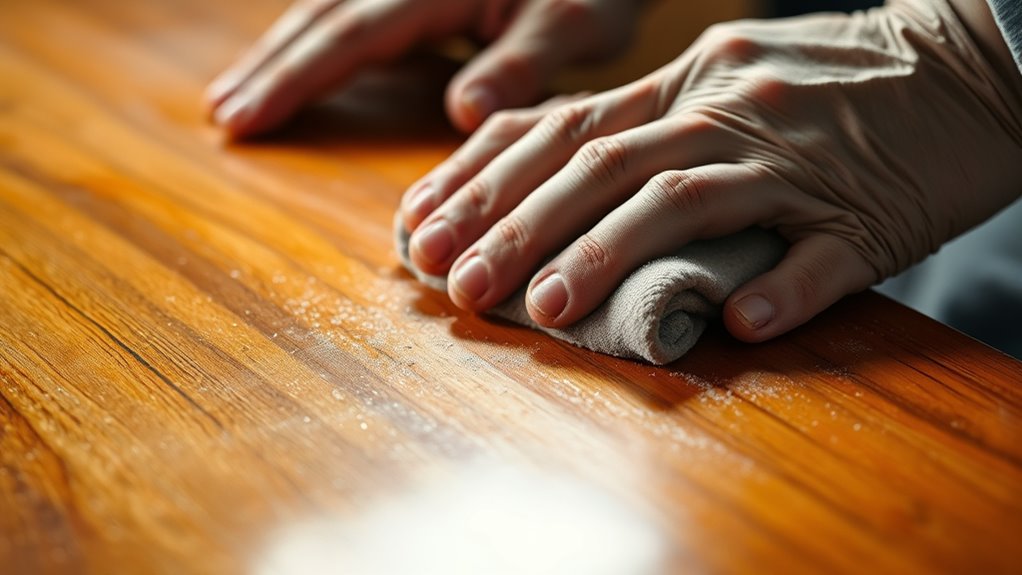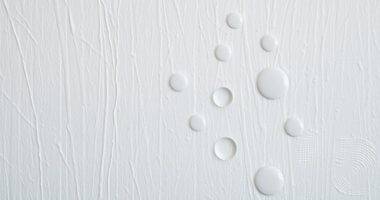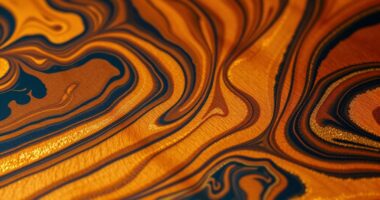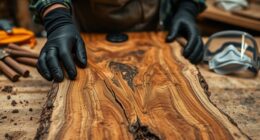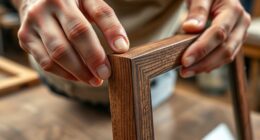To achieve a hand-rubbed finish through burnishing, start by selecting the right tools like burnishing balls, steel, or polished stones. Apply consistent pressure and work in small, circular motions, gradually smoothing microscopic surface irregularities. Use gentle heat or lubricants like oil to reduce friction and avoid damaging the surface. Patience and practice help you develop control for a reflective, durable finish. If you continue exploring, you’ll discover detailed techniques to perfect your craftsmanship.
Key Takeaways
- Use appropriate burnishing tools like polished stones or steel balls and apply consistent, gentle pressure in circular motions.
- Work in small sections, maintaining even pressure and avoiding rushing to prevent scratches or uneven patches.
- Slightly warm the metal or use lubricants like oil to reduce friction and achieve a smoother, more reflective surface.
- Practice controlled movements to compress surface irregularities gradually, enhancing both visual appeal and durability.
- Focus on smoothing microscopic surface imperfections to create a high-quality, hand-rubbed finish that mimics complex polishing.

Burnishing techniques are essential methods used to improve the surface finish and appearance of metal, wood, or plastic materials. When it comes to metal, burnishing can markedly enhance its look by creating a smooth, shiny surface that mimics the effect of more complex polishing methods. You’ll find that metal polishing through burnishing isn’t just about aesthetics; it also helps improve the material’s surface smoothing, making it more resistant to corrosion and wear over time. If you want a high-quality, hand-rubbed finish, understanding the basics of burnishing can make a noticeable difference in your work.
Burnishing enhances metal surfaces, creating a shiny, smooth finish that resists corrosion and wear over time.
To start, select the right burnishing tool or material suited to your project. For metal, you might use a burnishing ball, a smooth steel or brass tool, or even a polished stone. The key is to apply consistent pressure and circular motions to achieve a uniform surface. You don’t need abrasive compounds; instead, rely on the natural friction and pressure to work the metal’s surface, gradually smoothing out imperfections. With this technique, you’ll see the metal begin to develop a reflective sheen, highlighting the quality of your craftsmanship. The process involves repeatedly rubbing the surface with the burnishing tool, working in small sections for even results.
As you progress, focus on maintaining even pressure and consistent motions. This helps ensure a uniform surface smoothing and prevents uneven patches or scratches. The more you practice, the more control you’ll gain over the final finish. For best results, you can also warm up the metal slightly or use a lubricant like oil to reduce friction and facilitate smoother burnishing. Remember, patience is key; rushing through can lead to uneven finishes or surface damage. It’s a mindful process that rewards careful attention to detail.
Throughout the burnishing process, you’re fundamentally working to compress and smooth out microscopic surface irregularities. This not only enhances the visual appeal but also improves the surface’s tactile quality. Additionally, understanding the material properties involved can help optimize your technique for different surfaces. The technique is especially effective on softer metals like copper or silver, but with proper care, it works well on various materials. As you become more skilled, you’ll find that burnishing can be a simple yet powerful way to elevate the quality of your work, producing a refined, hand-rubbed appearance that’s hard to match with machine polishing. In the end, proper surface smoothing through burnishing results in a durable, attractive finish that showcases craftsmanship and attention to detail.
Frequently Asked Questions
What Tools Are Best for Burnishing Delicate Surfaces?
For delicate surfaces, you should use soft, non-abrasive tools that provide gentle burnishing without causing damage. Suitable burnishing tools include fine cotton or microfiber cloths, soft brushes, or felt pads, which protect the surface while delivering a smooth finish. These tools offer delicate surface protection and allow you to achieve a hand-rubbed look without risking scratches or imperfections, ensuring your work remains pristine and beautifully polished.
How Long Does a Typical Hand-Rubbed Finish Last?
Ever wonder how long your hand-rubbed finish will last? Typically, it can stay beautiful for several years with proper care. The finish’s longevity depends on the surface and usage, but regular maintenance tips like gentle cleaning and avoiding harsh chemicals help extend its life. To keep your piece looking fresh, consider re-burnishing lightly when it begins to dull. Does that make you want to give it a little extra TLC?
Can Burnishing Damage the Underlying Material?
Burnishing can damage the underlying material if it’s not compatible or properly prepared. You need to verify surface preparation is thorough and the burnishing tools are suitable for your material. Using incompatible materials or applying excessive pressure can cause scratches, dents, or even remove layers. Always test in an inconspicuous area first, and consider material compatibility to prevent damage and achieve a smooth, durable finish.
Is Special Preparation Required Before Burnishing?
You might worry burnishing damages your surface, but with proper prep, it’s safe. Before burnishing, you should thoroughly clean the surface to remove dirt and debris, ensuring smooth surface conditioning. Lightly sanding or polishing can also help create an ideal finish. This preparation not only prevents scratches but also enhances the hand-rubbed look, giving your project a professional, polished appearance that lasts.
How Do Environmental Factors Affect the Burnishing Process?
Environmental conditions greatly impact your burnishing process and the finish’s durability. Humidity and temperature fluctuations can cause the material to expand or contract, leading to uneven results or reduced longevity. Dust and dirt in the environment can settle on the surface, marring the finish. To guarantee a smooth, durable hand-rubbed finish, perform burnishing in a controlled, clean environment, and avoid extreme weather conditions.
Conclusion
By mastering burnishing techniques, you bring a gentle touch that whispers of craftsmanship and care. Each stroke reveals a subtle elegance, turning ordinary surfaces into something quietly extraordinary. Remember, it’s in your hands to create a finish that’s not just seen but felt—an understated beauty that invites admiration without fanfare. Embrace the process, and let your handiwork speak softly but powerfully, leaving a lasting impression of dedication and refined artistry.
